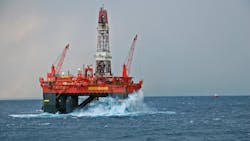Norwegian field investments could exceed $30 billion, NPD claims
Offshore staff
OSLO, Norway — The gradual withdrawal of Russian gas exports last year helped Norway become Europe’s largest supplier by year-end 2022, according to the Norwegian Petroleum Directorate’s (NPD) annual review.
Other factors were the Norwegian authorities’ decision to issue permits for increasing production from several offshore fields, overall a high degree of operational stability, and operations resuming at the Snøhvit Field in the Barents Sea following an extended shutdown caused by repairs to fire damage at the Hammerfest LNG complex.
Norway’s gas production was 9 Bcm up on the figure for 2021, and gas now accounts for more than half of production from the Norwegian Continental Shelf, with 122 Bcm produced last year. Total oil equivalent (oil and gas) production averaged about 4 MMbbl/d.
Last month, Johan Sverdrup Phase 2 came onstream in the North Sea, and Equinor restarted Njord in the Norwegian Sea following lengthy modification work. Various new fields should also come onstream in the next few years.
And some of the country’s older fields are producing longer, and more, than previously expected.
The submitted proposals comprised 13 plans for new developments, and others to increase recovery near existing fields or to extend field lifetimes. The NPD estimates total investments of about NOK300 billion ($30.16 billion), leading to reserves growth of 252 MMcmoe, half of which is gas.
The largest new project is Yggdrasil (ex-Noaka) in the North Sea, with projected investments of NOK115 billion ($11.56 billion) that include establishing new infrastructure on the shelf.
During 2022, 32 exploration wells were completed offshore Norway, resulting in 11 discoveries. Several were smaller than expected, which explains why resource growth was lower than in the three previous years.
The NPD remains convinced that the Barents Sea contains significant undiscovered gas resources. However, a lack of infrastructure to export the gas has deterred more widespread exploration in the region.
But more discoveries such as the recent Lupa, close to the Goliat complex, could make development profitable.
Advances in carbon capture and storage last year include completion of two injection wells for the Northern Lights project in the North Sea, and progress concerning the terminal in Øygarden in Vestland county. Construction is also underway of the world’s largest CO2 transport ship.
In 2022 the Norwegian authorities also awarded three exploration licenses for storage of CO2, one in the Barents Sea and two in the North Sea.
01.10.2023
